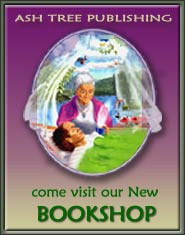Instinctive Birth: Finding The Pulse
by Jeannine Parvati Baker
author of Conscious
Conception
Those who danced were thought to be quite insane
by those who could not hear the music.
—Angela Monet
When I began my family back in 1969, I was studying psychology at the university. I had my ear to the ground, listening to what the Earth wanted of mothers at a pivotal time in our history.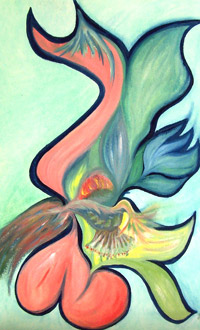 Feminism had sounded the drum and this mother’s heart was pounding. At last, women had the freedom to be all we could be and, oh, how we danced!
Feminism had sounded the drum and this mother’s heart was pounding. At last, women had the freedom to be all we could be and, oh, how we danced!
Much to my chagrin, the focus on women’s rights took a surprising turn in the 1970s. My heart fell to the ground, and I eventually stopped dancing so wildly. Feminism became synonymous with the right to choose abortion rather than what lay central in my soul: fertility awareness, natural childbirth and breastfeeding.
From celebration to dirge, the movement had a long way to go. I got immediately to work and haven’t stopped since. My work is aimed at making every baby a welcomed baby. I still remember how we danced with unbridled joy at being sisters on a journey, dancing as one, long before my d aughters made me a grandmother.
Though most people moved toward abortion rights, there were some voices of which I was aware calling out from the wilderness of “instinctive birth” and natural mothering: Sheila Kitzinger, Raven Lang, Juliette de Bairceli-Levy, Karen Pryor, Suzanne Arms, Rahima Baldwin, Nan Koehler, Peggy O’Mara, Frederick LeBoyer, and my own Prenatal Yoga and Natural Birth published in 1974. Yet the overwhelming call for women’s rights in the public mind was the choice to not be a mother.
From my perspective, this was the long way around for women to be liberated from the cult of the dominator: All that collective women’s genius primarily going into termination rather than life-giving - expression. It looked like women might lose the capacity to give natural birth altogether. The shift had already begun with natural birth defined as spontaneous with no intervention to any way a baby comes out of the mother (short of cesarean surgery).
It seemed to me that childbirth had been kidnapped from mothers and the ransom to be paid was education. In graduate school, I studied the work of the good doctors Niles Newton, Margaret Mead, Ashley Montagu, Konrad Lorenz, R.D. Lang, Arthur Janov, David Chamberlain, Joseph Chilton Pearce and many more scientists who informed me that human beings and other animals have an “instinct” to give birth. More importantly, these researchers also talked about some of the consequences when we don’t birth as nature intended.
Over a quarter of a century ago, the debate was on: Is there a human instinct to give birth? The jury still seems to be out or we wouldn’t have a holocaust in hospital delivery rooms throughout the world to this day. Based on the ample evidence, it was as apparent to researchers back then as it is now that mothers, especially in Western cultures, don’t innately have an instinct to give birth and, thus, medical assistance
is most often indicated.
The key word is “innately.” Instinctive birth was no longer innate (inborn) in the 1940s when I was pulled out with forceps; it was not imprinted at my own birth. My mother, though born at home herself, as were all her foremothers, was the first to be delivered of me in hospital. So, I did likewise when I made my mother a grandmother the first time. This was my imprint. However, education paid the ransom, and I wised up and had the rest of my babies at home.
What is the “instinct,” of which birth is allegedly an expression? According to science, one mother has it and another just doesn’t. The Latin root of “instinct” is an “impulse.” And an “impulse” comes from “pulse,” which originally meant a “grain or seed of beans, peas” (Skeat 1882).
If mothers have an impulse to give birth, perhaps it has something to do with the “pulse” itself—that is, the seed — the baby. Perhaps this is the missing piece to the puzzle of why some mothers instinctively give birth and others think they need “support” and/or “deliverance” of their babies.
When the scientific evidence had yet to substantiate my real experience, I turned to the ample wisdom of other cultures’ traditions. In this case, it was about how labor begins. All six of my babies told me that they were ready to be born and each began our labor in earnest. Metaphysical stories abound that babies choose their own birth time. It took many millennia, however, for medical science to “discover” that the fetus indeed initiates labor and the mother responds hormonally with “love”—oxytocin—which is the pulse of all life.
By the time I began having babies in the late 1960s, we had almost lost the pulse of instinctive birth. It was as if we had reverted to the notion that the Earth was flat, forgetting that the Mother is round, even circuitous. (Yet, if flat on her back, is it any wonder her pulse likewise goes flat?) Birth was considered a one-way street, and the baby was inherently at risk for the trip. Previous to this “discovery” that babies participated in childbirth, they were thought to be inert passengers going through the passageway (a.k.a. the mother, who is also likely to be rendered inert by the time of delivery).
Likewise, the Gaia Hypothesis had yet to be popularized and the planet was thought by Western societies to be our spaceship, rather than the living being She is—our Mother Earth. Though spiritual traditions relate how the Earth is our Mother and the human mother and baby are in communication with one another even before conception (and during birth) (Parvati Baker and Baker 1986), obstetrics has lagged far behind in applying this knowledge in childbirth (Odent 2002).
For one example, look at the so-called “lack of progress.” Most birth professionals use drugs (or herbs) to stimulate delivery rather than investigate why labor has slowed down. Nowadays, who really trusts that the baby wants to be born in his or her own time and actually is the mother’s main ally for instinctive birth? Instead, “lack of progress” is seen as a mechanical breakdown and therefore a fix is indicated. Yet, if mothers have an instinct to give birth, and that impulse is sustained, a “lack of progress” is seen in a way other than a delayed passenger or something that got stuck in the passageway. In my experience as mother and midwife, birth is more like a labyrinth than a runway.
When walking a labyrinth, sometimes it looks as if we are going away from the center, even backwards. Yet, eventually all of the twists and turns bring us to the destination. Progress cannot be measured in that realm. What is important is the journey because, once arrival at the center is achieved, there is the walk to get back out again. If you give up, you might feel lost, for in the Western myth of the labyrinth, the Minotaur at the center holds the secret of how to transform fear into the power to give birth.
Without meeting the Minotaur in the center of the labyrinth, that is, confronting our innermost fear, the way back may be more confusing. 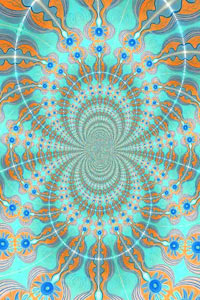 Tragically, when some women keep trying to avoid the Minotaur, they never make it back and postpartum depression can result.
Tragically, when some women keep trying to avoid the Minotaur, they never make it back and postpartum depression can result.
Instinctive birth is a journey into the core of the Earth (the Underworld) rather than a flight from it. After the baby is born comes the return from the center of the labyrinth,the depths of the most interior experience possible for a woman, to the outside world again. Instinctive birth allows an instinctive mothering and this relational matrix is what the Earth needs now more than ever. I would define healing-edge midwifery in the 21st century as applying the arts of labyrinthine facilitation—the Maiutic Method (inquiry in the manner of a midwife)—to each woman’s return to her instinctual self.
In the last century and in our post-modern world, progress is our most important product. It is not the quality as much as the quantity that is valued in Western cultures. And speed is everything because time is money. Therefore, once a woman is taxied to the runway of hospital-managed birth, an entire support crew is necessary for lift off to be efficient and punctual.
Yet, there is no hurry to eternity. Childbirth is a timeless moment, when the mother is not only giving expression of her love in the form of a baby, but also receiving vital information from this child about how to care for her or him in the way the Earth wants now. Like the pulse of the mother’s heart, instinctive birth may be inaudible to most, but it has always existed to those with the ears to hear. A way to amplify this “grain of truth,” to hear the instinct to birth is to encourage mothers to listen to their babies. The baby has what is needed within his or her “seed” self to be born and the mother has the most urgent motive to give birth. All seems to be in place for instinctive birth. What restricts this instinct is the erroneous idea that babies are not conscious participants in their own arrival.
As midwives we have the capability of deepening the possibility of instinctive birth. We are not merely flight attendants, that is, servants to the passenger in the air, set apart from the Earth. We can be educators on behalf of the Earth, who draw out and care for what is already deep inside the mother.
For example, when a mother asks how far along she is in labor, we can suggest that she ask her baby. If the mother doesn't know the answer, query her again by saying, “If you did know, what would you say?” If she persists in not knowing, we might say, “You don’t have to have the right answer. Just make something up.” When judgment is suspended, more often than not, out comes the self-fulfilling prophecy now made conscious and we have more data to help the mother (if needed).
If mothers have an instinct to give birth, midwives have the impulse to assist them. All we have to do is draw out the natural knowing from the mother that, if she could conceive a baby naturally, she can give birth naturally. Our presence reminds her that all she needs to give birth is already within—her baby!
Midwives find that, instinctively, mothers give birth when in trust. Can we trust that “birth is as safe as life gets,” in the words of Harriette Hartigan? Now is the best time for midwives to realize this by sharing with mothers the truth: Their babies trust them to respond to their messages during labor, at birth and for the rest of their lives. The Earth will be a better place for all our relations as more families experience their trust in one another from before birth and beyond.
Let the dance to celebrate life begin.
Jeannine Parvati Baker
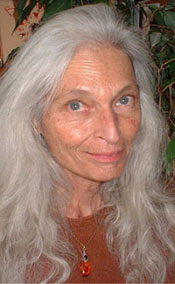 Jeannine Parvati Baker is author of Prenatal Yoga and Natural Childbirth, Hygieia: A Woman’s Herbal, and co-author of Conscious Conception: Elemental Journey Through the Labyrinth of Sexuality. She is also the founder of Hygieia College, a school of lay midwifery and womancraft.
Jeannine Parvati Baker is author of Prenatal Yoga and Natural Childbirth, Hygieia: A Woman’s Herbal, and co-author of Conscious Conception: Elemental Journey Through the Labyrinth of Sexuality. She is also the founder of Hygieia College, a school of lay midwifery and womancraft.
References:
Skeat, Walter W. (1882). Concise Etymological Dictionary of the English Language. Oxford, England: Oxford University Press.
Parvati Baker, Jeannine and Baker, Frederick. (1986). Conscious Conception: Elemental Journey Through the Labyrinth of Sexuality. Joseph, Utah: Freestone Publishing.
Odent, Michel. (2002). The Farmer and The Obstetrician. London, England: Free Association Books
First printed in Midwifery Today Winter 2003 Number 68

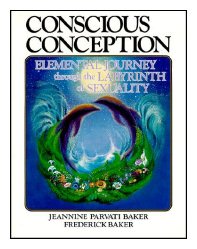 Conscious
Conception
Conscious
Conception by Jeannine Parvati Baker is the comprehensive
reference for fertility awareness. All natural methods of family
planning, both ancient and current, are presented within the
larger context of sexuality and an evolving spirituality, which
embraces the religious wisdom traditions and goes beyond.
"This book is a beautiful, breath of fresh air!
Ms. Baker is a goddess, and will thoroughly help you to see
the goddess within yourself. What can I say about this lovely
work of art? As you meditate through the words of this "bible",
you will begin to cultivate a fertile self you never knew
you had. I bought this book to help with my fertility problems,
and it is wonderful in this aspect, but it is oh, so much
more! Please read this book."
other articles by Jeannine Parvati Baker
~Shamanic Midwifery, Hands That Heal Birth part 1
~Shamanic Midwifery, Hands That Heal Birth part 2
Order
Jeannine Parvati Baker's book at our bookshop
Or order via mail: Ash Tree Publishing PO Box 64 Woodstock,
NY 12498 include a check or money order for $29.95
(CONSCIOUS CONCEPTION retails for $25.00 plus $4.95 shipping)


 Tragically, when some women keep trying to avoid the Minotaur, they never make it back and postpartum depression can result.
Tragically, when some women keep trying to avoid the Minotaur, they never make it back and postpartum depression can result. Jeannine Parvati Baker is author of Prenatal Yoga and Natural Childbirth, Hygieia: A Woman’s Herbal, and co-author of Conscious Conception: Elemental Journey Through the Labyrinth of Sexuality. She is also the founder of Hygieia College, a school of lay midwifery and womancraft.
Jeannine Parvati Baker is author of Prenatal Yoga and Natural Childbirth, Hygieia: A Woman’s Herbal, and co-author of Conscious Conception: Elemental Journey Through the Labyrinth of Sexuality. She is also the founder of Hygieia College, a school of lay midwifery and womancraft. Conscious
Conception
Conscious
Conception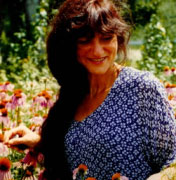 Rosemary Gladstar
Rosemary Gladstar 
